How to grow Andromeda
There is just one species of this unusual member of the heather family (Andromeda polifolia), found growing in acid peat bogs in the arctic and other cool regions of the northern hemisphere. Also known as ‘bog rosemary’, it is a compact, bushy, evergreen shrub with foliage with uncannily rosemary-like foliage, though it can be distinguished from its Mediterranean lookalike by the unmistakeably heather-like, rounded urn-shaped flowers which smother the plant in spring.
There are many different cultivars of this plant available, from the popular glaucous-leaved ‘Blue Lagoon’, to the broader-leaved ‘Macrophylla’ and many in between.
Andromeda is not to be confused with Pieris, another, much larger member of the heather family which, somewhat confusingly, is known by the common name of ‘Japanese andromeda’.
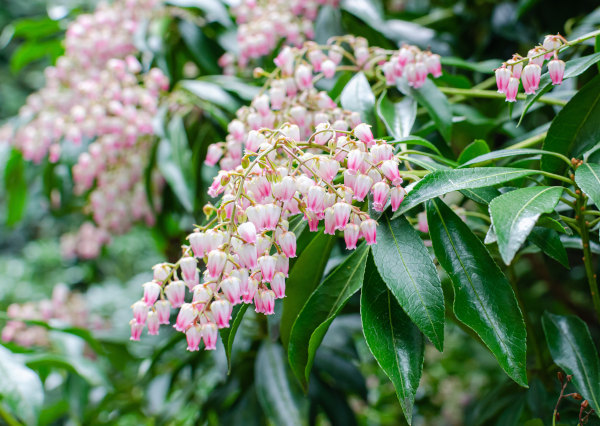
Key Information
Soil pH
Position

Hardiness


Where to plant Andromeda
For best results, plant Andromeda in autumn or spring. An autumn planting can be done by those gardening in mild conditions (and broadly speaking, this is the southern half of the UK). For those liable to cold winters, it is best to wait until spring (generally the northern half of the UK). Planting can also be carried out in summer, though be prepared to water regularly.
Andromeda is ideal for tricky, poorly drained spots, though will also grow in any consistently moist conditions, providing the soil has an acidic pH. Bogs, shady rock gardens, woodland gardens, or a container filled with ericacous compost (ideal if your garden soil has a more neutral to alkaline pH) all work well.
How to plant Andromeda
- For planting in the ground, dig the soil area removing any large stones and weeds and breaking up any lumps. Mix in some organic matter with an acidic pH, such as ericaceous compost, composted pine needles, or leaf mould. Rake level and firm with your heels. Rake level again.
- Water plants well and allow to drain before planting.
- A good tip is to dig a hole twice the size of the root-ball. Fill with water and allow to drain before placing in the plant.
- Place the plant in the hole, ensuring the top of the root ball sits level with the surface of the soil.
- Backfill with soil and firm in gently with your foot.
- Soak well with water.
- Mulch around the base with ericaceous compost, composted pine needles, or leaf mould.
- For planting in containers, first choose an appropriately sized pot. The best practice is to start just a few centimetres larger than the rootball and increase in size every year or two. Always ensure there are plenty of drainage holes in the bottom.
- If you are using a large or heavy pot, it can be a good idea to fill and plant it in situ to save yourself the trouble of moving once full.
- Use a ericaceous compost with plenty of horticultural grit mixed in, and, if not already present in the compost (check the description on the bag) some slow-release ericaceous fertiliser granules.
- Start by partially filling the pot with compost; enough so that when placed on it the upper surface of the root ball is about 3cm lower than the top of the pot.
- Infill all the space surrounding the root ball with compost, firming down with your fingers then adding a little more so the plant is held tight.
- Pick up the pot (if you can!) and lightly tap on the potting bench or ground a few times to help further settle the compost around the plant.
- Soak well with water.
- A mulch with horticultural grit will look attractive and help to prevent a ‘cap’ or crust forming on the top of the compost (something container plants can suffer due to the artificial nature of their watering).
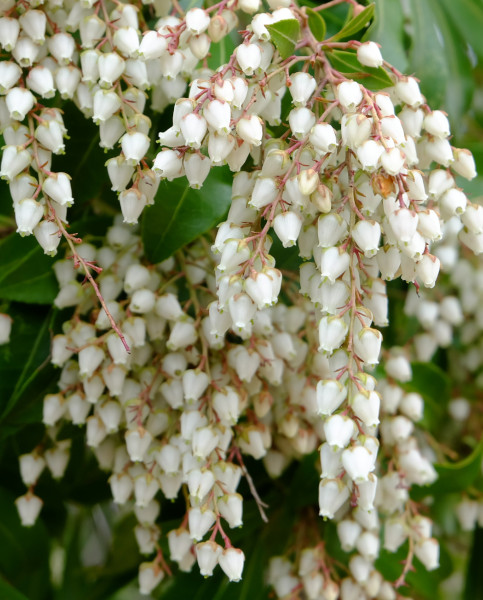
What to plant with Andromeda
If you have the acidic conditions needed to grow andromeda, a whole host of spectacular acid-loving garden plants is at your fingertips. Rhododendron, camellia, hydrangea, enkianthus, physocarpus, hamamelis, clethra, and vaccinium are just a few trees and shrubs to get you started. For a lower storey of perennials joining andromeda at ground level, try liriope, ophiopogon, and stokesia.
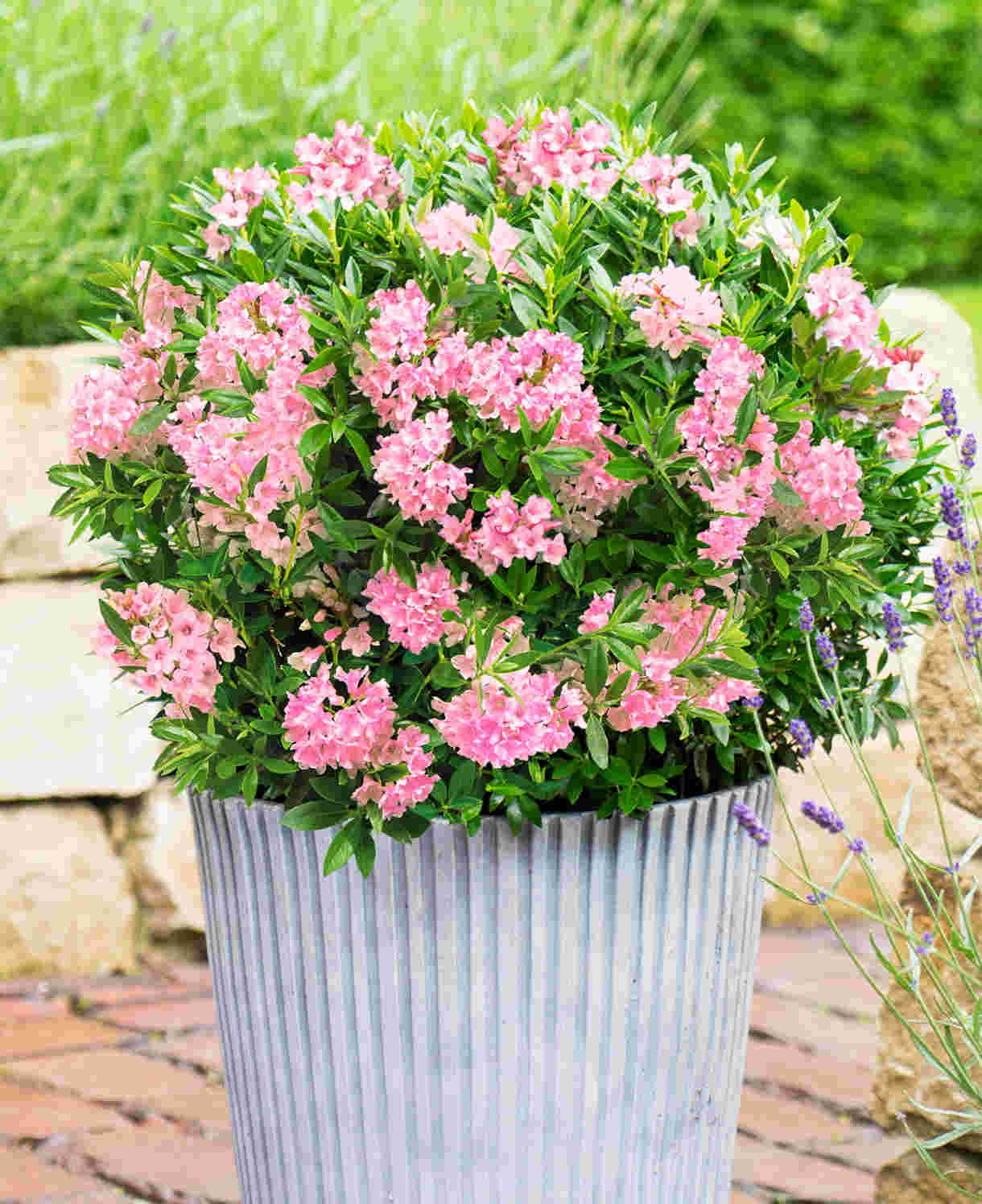
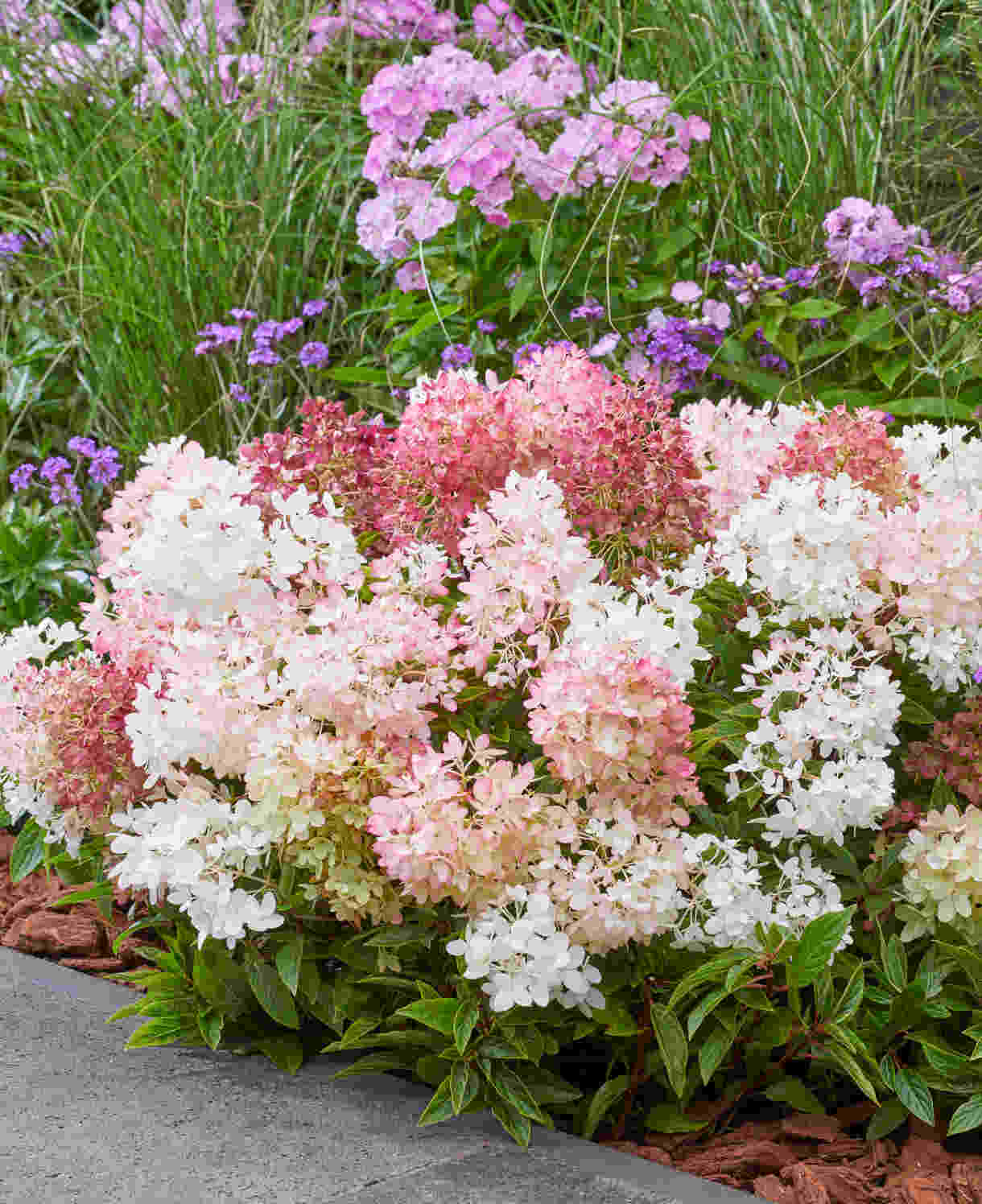
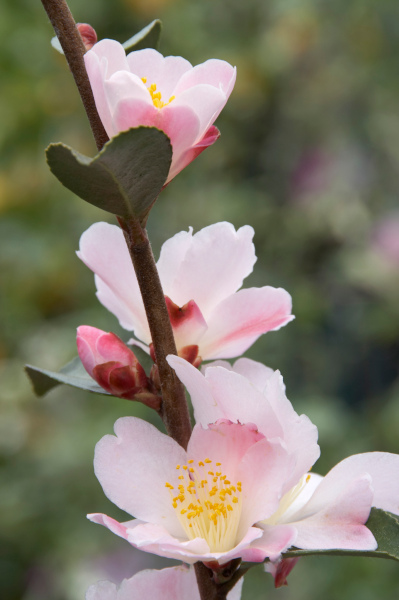
How to care for Andromeda
Pruning and Deadheading
Andromeda falls into the RHS pruning group 10. It flowers on new wood, so benefits from an annual prune after flowering has finished each year. Trim the whole plant back lightly, while also removing any dead, diseased, damaged, or badly placed growth completely.
Like many small, evergreen shrubs, andromeda can be relatively short-lived and tends to need replacing after around ten years.
Watering
It’s hard to overwater this moisture-loving shrub. Make sure you plant it in consistently damp soil and be ready to step in when any more than the top few centimetres of soil dry out. Regular mulching is an effective ally when it comes to maintaining moisture levels in the soil. See more on this in the ‘Feeding’ section.
Container-grown andromeda needs more attention as it is much more likely to dry out. Water frequently throughout every growing season, again, not allowing more than the top few centimetres of compost to become dry (note that in the height of summer this can happen in as little as 24 hours). From mid-autumn, the British climate tends to take over watering needs, though do remember to step in in the event of an unseasonably dry spell.
Harvested rainwater is best for acid-loving plants such as andromeda, as tap water can contain calcium which increases alkalinity (especially in hard water areas). Having said this, tap water is better than nothing if it is all you have available.
Feeding
For its first couple of years growing in the open ground, feed andromeda with a ericaceous feed applied to the surface of the soil and lightly worked in (known as a ‘top dress’). This is best done in early spring, followed by a mulch of acidic organic matter, i.e., a layer of ericaceous compost, composted pine needles, or leaf mould applied to the soil around the plant. This has the added benefit of suppressing weeds and locking in moisture.
Once your andromeda is well established, an annual mulch should provide sufficient nutrients, however, apply a top dress as above if ever you feel an extra boost is needed.
Container-grown plants rely more on the gardener for nutrition. Start by making sure you use a good quality ericaceous compost, then from March to the end of July apply an ericaceous liquid feed at regular intervals according to the manufacturer instructions.
Remember also to repot your andromeda every few years, going up slightly in pot size and using fresh, ericaceous compost containing some ericaceous feed. Once the plant reaches full size an annual top dress is advisable: each spring, scrape off the top 5cm of compost and replace with fresh, remembering to mix in a little more ericaceous feed too.
Cold Protection
Most andromeda cultivars are hardy enough to withstand winter in the UK without the need for additional protection. The exception to this is A. polifolia ’Blue Ice’, which may benefit from a dry, insulating mulch (straw, bracken, or bark chippings are all ideal), applied around the roots in autumn, particularly if you are prone to harsh winters.
Like all plants, those grown in containers can be more susceptible to the cold, so it can be worth wrapping the base in hessian, fleece, or bubblewrap (especially ’Blue Ice’). This insulates the roots while also protecting the pot from frost damage.
Pests and Diseases
Andromeda is considered trouble-free.
How to propagate Andromeda
Andromeda can be propagated by softwood cuttings, best taken in early summer:
- Choose non-flowering, soft, new stems, aiming to take a longer piece than the ideal eventual length of around 10cm (to allow for trimming).
- Put in a plastic bag straight away to prevent drying out.
- Fill a pot (or several, if you have a lot of cuttings) with a perlite-heavy compost mix (at least 50% perlite).
- Trim the end of the cutting to just below a node (point at which leaves grow).
- Remove lowest leaves and soft tip, leaving 2-4 leaves.
- If the remaining leaves are large, cut them in half with a sharp knife (to reduce water lost through transpiration).
- Use a dibber or pencil to make a hole and help guide the cuttings into the compost. Gently compress the compost around the cutting and tap the pot a few times.
- Several cuttings can be put in the same container if there is enough space to do this without them touching.
- Water lightly with a fine rose on your watering can.
- Place in a greenhouse or propagating unit if you have one or covered with a plastic bag on a windowsill if not (out of direct sunlight).
- Keep the cuttings misted and occasionally watered until they root. You will know this has happened when roots emerge out of the bottom of the container.
- Gently remove rooted cuttings and pot them into individual pots. Grow on in a protected environment such as a greenhouse, windowsill, or coldframe until they are large enough to be used.
Another option is to pot up suckers in autumn or spring.
- Remove rooted suckers from the parent plant using sharp secataurs and a trowel.
- Trim down until you are left with a piece containing both a growing point and roots.
- Pot up into individual pots filled with a well-draining compost mix. Grow on in a cold frame or unheated greenhouse until large enough to plant out.
- You may also wish to try transplanting suckers directly to the desired location. Water well, mulch, and take a watchful approach to watering until you are confident they have fully established.
* Many plants carry Plant Breeders Rights and cannot be propagated for commercial purposes.
Common Andromeda questions
- Is andromeda poisonous?
All parts of this plant can be toxic when consumed in large quantities. Not to be confused with the very similar-looking (and edible) rosemary! - Is andromeda difficult to grow?
Providing its two key needs of an acidic growing medium and consistent moisture are met, this is a low maintenance and straightforward flowering evergreen shrub.




